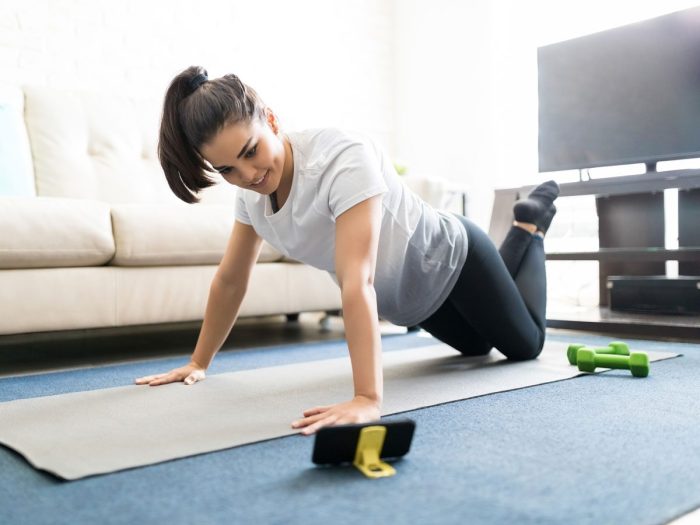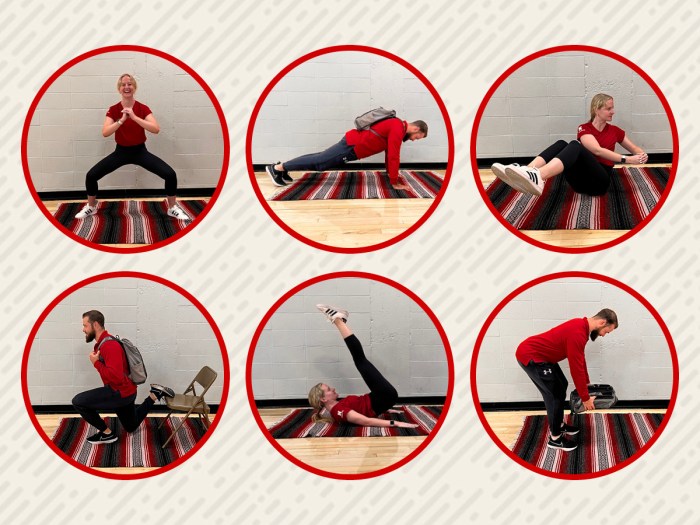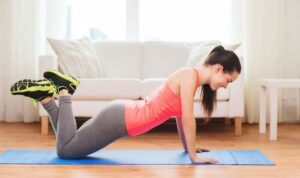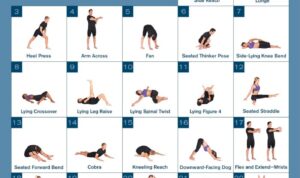When it comes to fitness, home workouts are the new cool. Dive into a world of sweat, gains, and convenience as we explore the realm of working out from the comfort of your own crib.
From bodyweight exercises to yoga sessions, get ready to discover the ultimate guide to getting in shape without stepping foot outside.
Benefits of Home Workouts

Exercising at home offers numerous advantages compared to going to the gym. Not only does it save time and money, but it also provides flexibility in scheduling your workouts according to your own convenience.
Save Time and Money
Working out at home eliminates the need to commute to the gym, saving precious time that can be better spent on exercising. Additionally, you can avoid costly gym memberships and long-term commitments by creating your own home gym with minimal equipment.
Flexibility in Scheduling
With home workouts, you have the freedom to choose the time that suits you best without being restricted by the operating hours of a gym. Whether you prefer early morning sessions or late-night workouts, you can tailor your exercise routine to fit your daily schedule seamlessly.
Types of Home Workouts

When it comes to working out at home, there are various types of exercises you can do to stay fit and healthy without the need for a gym membership or fancy equipment. Let’s explore some popular options:
Bodyweight Exercises
Bodyweight exercises are great for building strength and endurance using just your own body weight as resistance. Examples include push-ups, squats, lunges, and planks.
Yoga
Yoga is a fantastic way to improve flexibility, balance, and mental well-being. It combines physical poses, breathing techniques, and meditation to create a holistic workout experience.
Pilates, Home workouts
Pilates focuses on core strength, flexibility, and overall body awareness. It involves precise movements and controlled breathing to target specific muscle groups and improve posture.
HIIT (High-Intensity Interval Training)
HIIT workouts are intense, efficient, and effective for burning calories and improving cardiovascular fitness. These workouts involve short bursts of high-intensity exercise followed by brief periods of rest or lower-intensity activity.
Cardio vs. Strength Training
Cardio-based home workouts like HIIT are great for improving cardiovascular health, burning calories, and boosting metabolism. On the other hand, strength training routines using bodyweight exercises or dumbbells help build muscle, increase metabolism, and improve overall strength and endurance.
Equipment Needed
The equipment needed for home workouts varies depending on the type of exercise you choose. For bodyweight exercises, no equipment is necessary. Yoga may require a mat, blocks, and straps. Pilates often utilizes a mat and resistance bands. HIIT workouts can be done with minimal equipment like dumbbells, a jump rope, or a kettlebell.
Creating a Home Workout Routine
When designing a home workout routine, it is important to consider your fitness goals, available time, and equipment. A well-planned routine can help you stay motivated and make progress towards achieving your desired results.
Tips for Designing an Effective Home Workout Plan
- Set specific and achievable goals: Whether it’s losing weight, building muscle, or improving endurance, having clear goals can help you tailor your workouts accordingly.
- Include a variety of exercises: Incorporate cardio, strength training, and flexibility exercises to ensure a balanced workout routine.
- Plan your schedule: Determine the best time of day to work out and create a weekly schedule that includes different types of workouts on different days.
- Listen to your body: Pay attention to how your body responds to different exercises and adjust your routine accordingly to prevent injuries.
- Track your progress: Keep a workout journal or use a fitness app to track your workouts, progress, and achievements over time.
Setting Realistic Fitness Goals for Home Workouts
- Start with small, achievable goals: Setting realistic goals can help you stay motivated and build confidence as you progress.
- Consider your current fitness level: Be honest about where you are starting from and set goals that challenge you but are also within reach.
- Break down larger goals: If your ultimate goal is to run a marathon, break it down into smaller milestones like running a certain distance each week.
- Celebrate your achievements: Acknowledge and celebrate your progress along the way to help you stay motivated and committed to your fitness journey.
The Importance of Including Rest Days in a Home Workout Routine
- Allow time for recovery: Rest days are essential for muscle repair, growth, and overall recovery from intense workouts.
- Prevent burnout and injury: Overtraining can lead to burnout, fatigue, and increased risk of injury, so it is important to give your body time to rest and recover.
- Improve performance: Rest days can actually improve your performance by allowing your muscles to recover and rebuild stronger than before.
- Listen to your body: If you feel fatigued, sore, or overly tired, take a rest day to prevent overtraining and maintain your overall health and well-being.
Motivation and Accountability
Staying motivated and holding yourself accountable are key components of a successful home workout routine. Without the external structure of a gym or trainer, it can be challenging to maintain consistency. However, with the right strategies, you can stay on track and achieve your fitness goals.
Setting Clear Goals
- Define specific and achievable fitness goals for yourself. Whether it’s losing weight, building muscle, or improving endurance, having a clear target will keep you focused and motivated.
- Break down your goals into smaller milestones to track your progress and celebrate your achievements along the way.
Creating a Routine
- Establish a regular workout schedule that fits into your daily life. Consistency is key to forming a habit, so set aside dedicated time for exercise each day.
- Include a variety of exercises to keep things interesting and challenge different muscle groups. This will prevent boredom and plateaus in your progress.
Finding a Workout Buddy or Online Community
- Joining forces with a workout buddy or online community can provide support, motivation, and accountability. You can share progress, tips, and challenges with like-minded individuals.
- Having a workout partner can make exercising more enjoyable and help you push through tough workouts. Plus, you’ll be less likely to skip a session when someone else is counting on you.

